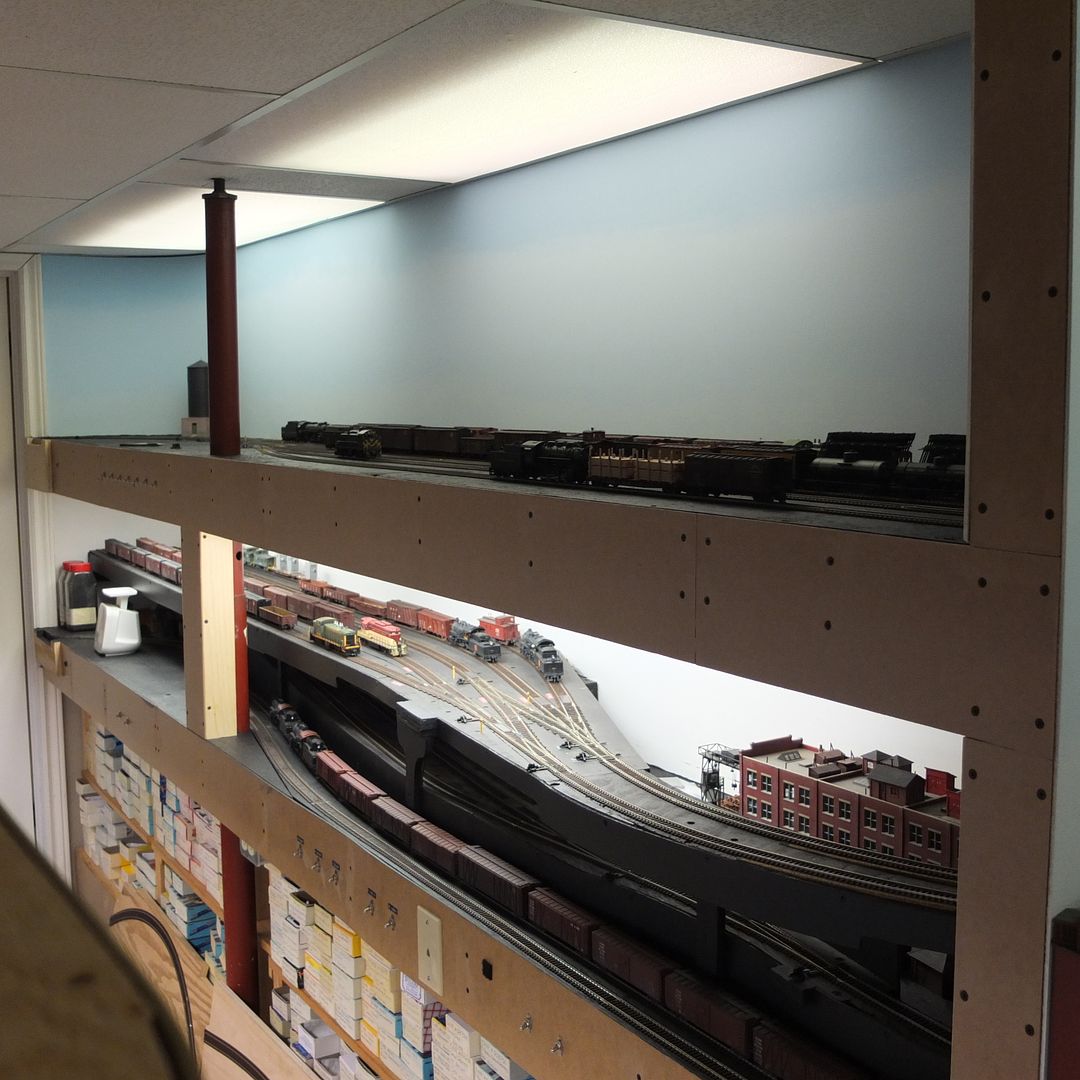My layout, partially double-decked, uses a 45’ long nolix to gain altitude, and while it’s possible to do continuous running on the main level, operations are normally point-to-point, between five staging yards, all dead-ended.
Trains are manually made-up and/or broken down in these yards, so they’re visible and very accessible. If I wanted, I could use locomotives to sort the cars and assemble them into trains, but it’s not really something in which I’m interested.
When a train reaches its destination, some of its cars will be returned to their respective boxes (representing elsewhere), while others, usually picked-up along their route, will go out on another train, either for delivery somewhere along the route, or to another staging yard, to be removed (to a different elsewhere).
Here’s a view of four of the staging yards…

The two lower ones each consist of only two tracks, while the next one up has five, with seven on the highest level. The fifth staging area is in my workshop, in an adjacent room, and also has two tracks.
Cars going “elsewhere” return to their respective boxes on the shelves under the staging area, and new cars are drawn from the same storage area.
Everything is easy to see and easy to add or remove cars by-hand (although the second staging track up from the bottom is a bit tight, and is usually serviced by a switcher).
I’m personally not a fan of helices, as I’d rather have the trains in view, and with some scenery around them
Wayne
